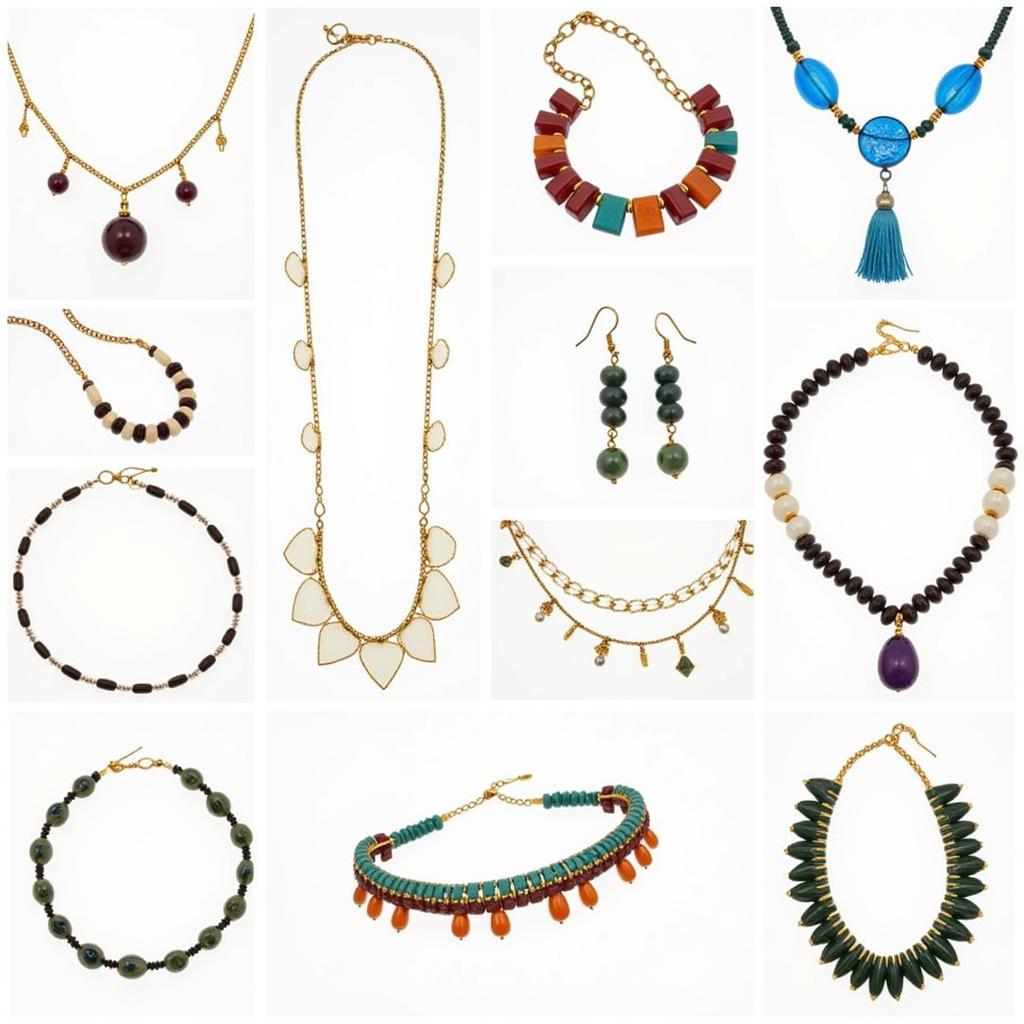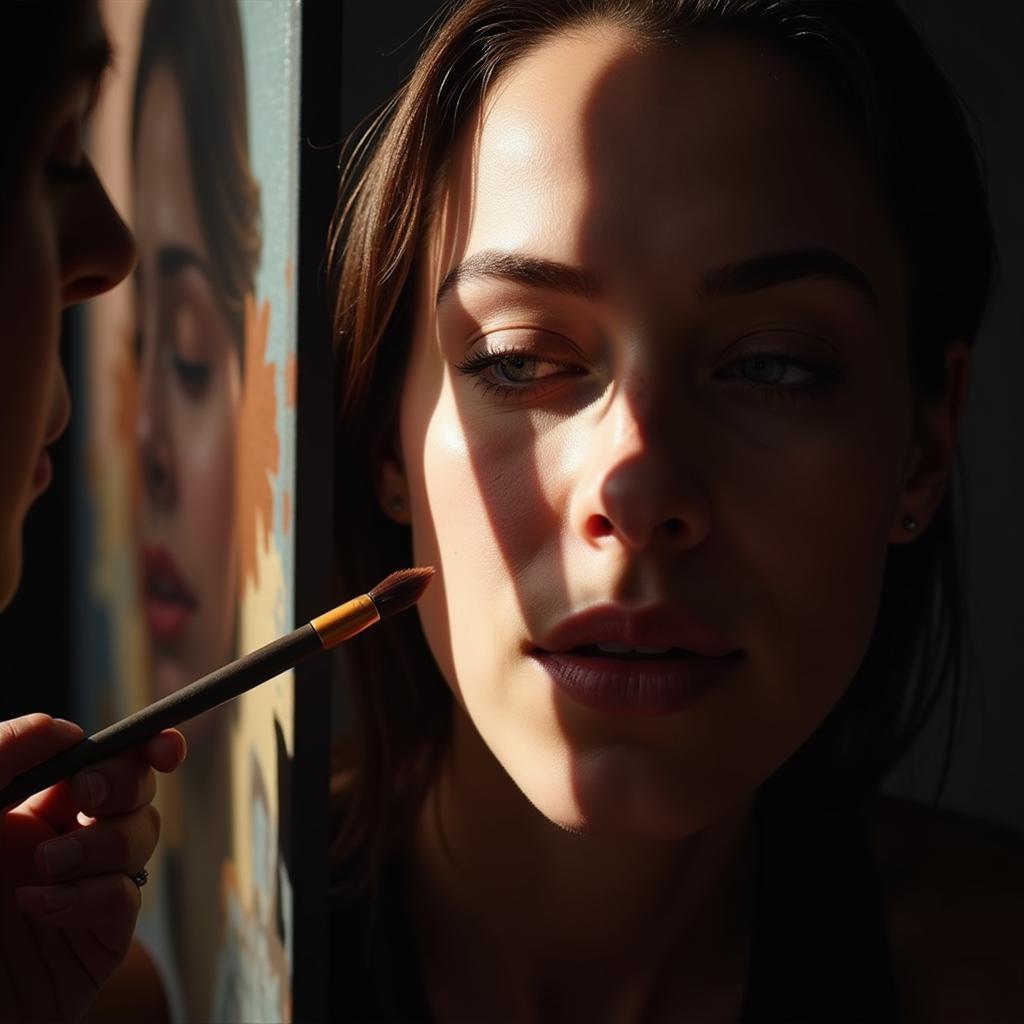Exploring the Vibrant World of Art Glass Beads
Art Glass Beads have captivated artists and collectors for centuries. From ancient Egyptian adornments to contemporary jewelry designs, these small, shimmering objects hold a unique allure. Their vibrant colors, intricate patterns, and the sheer artistry involved in their creation make them a fascinating subject for exploration. Whether you’re a seasoned beader, a curious crafter, or simply appreciate the beauty of handmade objects, this article will delve into the world of art glass beads, exploring their history, creation process, and diverse applications. You might even be inspired to try some canvas mosaic art yourself!
A Journey Through Time: The History of Art Glass Beads
The history of art glass beads is intertwined with the history of glassmaking itself. Evidence suggests that the earliest glass beads date back to Mesopotamia, around 3500 BCE. These early beads were simple and functional, often used as barter or for personal adornment. As glassmaking techniques evolved, so did the artistry of glass beads. Egyptians became masters of glassmaking, creating intricate beads adorned with vibrant colors and elaborate designs. These beads were not only decorative but also held symbolic meaning, often representing status, wealth, or spiritual beliefs. The Romans, too, were skilled glass bead makers, and their trade routes helped spread the craft throughout Europe and beyond.
Over time, distinct regional styles emerged, each reflecting local traditions and artistic sensibilities. Venetian glass beads, renowned for their exquisite craftsmanship and intricate millefiori patterns, became highly sought after during the Renaissance. African trade beads, often made from recycled glass, played a significant role in cultural exchange and commerce.
From Molten Glass to Miniature Masterpieces: The Art of Beadmaking
Creating art glass beads is a mesmerizing process that combines technical skill with artistic vision. Several techniques are employed, each yielding unique results. Lampworking, also known as flameworking, involves melting glass rods in a torch flame and shaping the molten glass onto a mandrel. This technique allows for intricate detail and precise control over the bead’s shape and color.
Another common method is furnace work, where glass is melted in a kiln and then manipulated into various forms. This technique is often used for creating larger beads or sculptural glass pieces. Regardless of the method, the artistry lies in the beadmaker’s ability to transform molten glass into miniature works of art.
The application of color and pattern adds another layer of complexity to beadmaking. Various techniques, such as fuming, layering, and encasing, are used to achieve stunning visual effects. From the vibrant hues of a single-color bead to the intricate patterns of millefiori, the possibilities are endless.
Where Art Meets Function: The Uses of Art Glass Beads
Art glass beads find their way into a multitude of applications, limited only by the imagination. Jewelry making is perhaps the most common use, with beads adorning necklaces, bracelets, earrings, and other accessories. From simple, elegant designs to elaborate, statement pieces, art glass beads add a touch of unique beauty to any ensemble. Beyond jewelry, these versatile beads are also used in bird mosaic art, embroidery, and other craft projects, adding texture, color, and a touch of artistry to various creations.
 Art Glass Beads in Jewelry Designs
Art Glass Beads in Jewelry Designs
“The beauty of art glass beads lies not only in their aesthetic appeal but also in their ability to tell stories,” says renowned glass artist, Amelia Dubois. “Each bead is a tiny canvas, a miniature world waiting to be discovered.”
How are art glass beads made?
Art glass beads are created using several techniques, including lampworking and furnace work. Lampworking involves melting glass rods in a torch flame and shaping the molten glass onto a mandrel. Furnace work involves melting glass in a kiln before manipulating it.
What are the different types of art glass beads?
Art glass beads come in a wide variety of types, distinguished by their production techniques, colors, patterns, and finishes. Examples include millefiori beads, blown glass beads, and lampwork beads.
 Various Types of Art Glass Beads
Various Types of Art Glass Beads
Where can I buy art glass beads?
Art glass beads can be purchased from a variety of sources, including online marketplaces, craft stores, bead shops, and directly from individual artists. Consider exploring glass marble art as well for additional inspiration.
What are some creative uses for art glass beads?
Beyond jewelry making, art glass beads can be used in various creative projects, such as dried placenta art, garden pole art and embroidery. They can also be incorporated into home décor items, such as wall hangings, mobiles, and decorative bowls.
“The possibilities are as limitless as your imagination,” adds Dubois. “Experiment, explore, and let the beads guide you on a creative journey.”
In conclusion, art glass beads offer a captivating blend of art and history. From their ancient origins to their contemporary applications, these miniature masterpieces continue to inspire and enchant. Whether you are drawn to their vibrant colors, intricate patterns, or the sheer artistry involved in their creation, art glass beads offer a world of creative possibilities waiting to be explored.
FAQ
- What is the difference between lampwork and furnace work beads?
- How do I care for my art glass beads?
- What are millefiori beads?
- Where can I learn to make art glass beads?
- Are all art glass beads handmade?
- What are some popular art glass bead artists?
- How can I identify authentic art glass beads?
Need more help? Contact us at Phone Number: 02462573573, Email: danteum@gmail.com or visit us at Savico Megamall, 7-9 Đ. Nguyễn Văn Linh, Gia Thụy, Long Biên, Hà Nội 10000, Việt Nam. We have a 24/7 customer service team.



